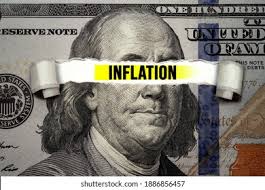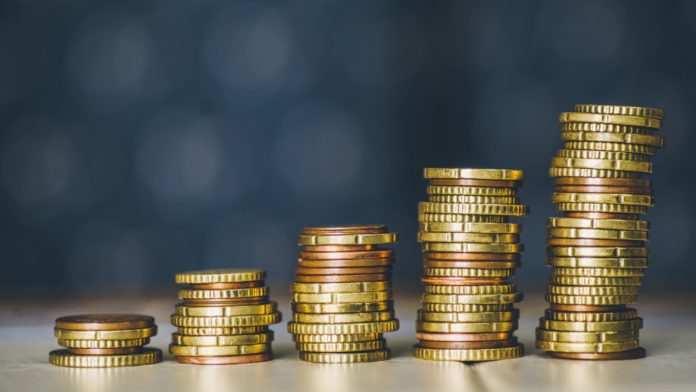Inflation is one of the most important economic forces investors need to consider when investing their hard-earned money.
The reason: Inflation significantly impacts investment returns over time, especially in fixed income, as well as household buying power. When inflationary forces begin to emerge, investors should become defensive and adjust their portfolio allocations, as well as their everyday buying behaviors.
Inflation is part of almost every economic cycle worldwide. These cycles often run their course every six to ten years. The simple definition of inflation is too many dollars chasing too few goods. As a result, prices increase a more people compete to buy products.
The current inflation wave is complicated by the COVID epidemic, years of monetary expansion from the Federal Reserve, a labor shortage, COVID relief bills, and higher individual savings levels from people who could not spend their money when the economy closed to contain the virus. 
These factors combined to produce the spike in inflation. While economists are debating how long this inflation may last, it’s clear that inflation is a significant economic and political problem. In the meantime, here are six things investors need to know about investing in an inflationary environment.
1. Inflation Has Been Low, For Too Long
Inflationary environments are historically challenging because inflation is often associated with an economic recession or depression. However, while not expected, periods of solid growth can also be accompanied by a heightened degree of inflation due to increased demand and scarce resources leading to higher prices for goods and services.
Over the past decades, the economy has experienced short bursts of high inflation followed by long periods where inflation was low. Low inflation rates often produce low or negative real interest rates across most developed economies. Some central banks, such as those in Europe (Germany, France, Denmark, and the Netherlands, Sweden, Belgium) and Japan, have been forced to create negative interest rate policies to stimulate economic growth at all-time lows of inflation.
When central banks create a negative interest rate environment, it is done to promote growth via accelerated borrowing and spending, push inflation rates higher, and devalue a country’s currency to increase imports and exports. When this occurs, the low negative rates can continue for years.
The vital thing individual investors should note is that fixed-income investments do not do well during periods of heightened inflation. This hurts people living on a fixed income, especially those who have conservatively invested in CDs and bonds.
2. The Fed Is Trying to Create A Period Of Low-To-No Inflation For As Long As Possible
As noted, low inflation negatively affects the real rate of return on fixed-income investments, such as CDs, bonds, or GICs. These instruments could be kept artificially low for as long as six years by the Federal Reserve to combat deflationary forces, which can keep pressure on consumer spending and make it difficult for businesses to generate revenue during times where consumers refuse to spend money.
The real rate of return is the actual yield investors receive minus inflation rates. So, in theory, when inflation rates are low or negative, you can expect to see a similarly low rate of return on fixed-income investments over time. This means holding cash inside these accounts will not be particularly rewarding. However, simply withdrawing your cash and leaving it idle could prove costly as well, thanks to the out-of-control fees financial institutions charge for doing so.
3. High-Interest Rates Are Good for Equity Markets and Bad For Fixed Income Investments
On the other hand, high-interest rates benefit equity investment markets. At the same time, poor economic conditions accompanied by subdued inflation levels often lead to subpar returns for fixed-income investments, like GICs and bonds.
For example, a rise in interest rates can be a boon for financial markets or trade finance services as it leads to higher borrowing costs. These higher costs pressure the economy to grow. However, this also makes fixed-income investments less desirable. People move money from these traditional safe havens into riskier assets like equities, mutual funds, or ETFs that earn much better returns over time. That is why investors often see equity investment returns well above GDP growth during periods where interest rates are high.
4. Equity Sectors to Consider During High Inflation
- Rises in inflation should spark a change in portfolio allocations into sectors like industrials, energy and consumer discretionary funds, and ETFs. Minor exposure to gold is also considered a traditional inflationary hedge. Some ETFs to consider during inflationary periods, according to the NASDAQ, are:
- abrdn Bloomberg All Commodity Strategy K-1 Free ETF (NYSEARCA:BCI)
- SPDR Gold Shares (NYSEARCA:GLD)
- Schwab US REIT ETF (NYSEARCA:SCHH)
- Invesco Dynamic Energy Exploration & Production ETF (NYSEARCA:PXE)
- Vanguard Short Term Inflation-Protected Securities ETF (NASDAQ:VTIP)
- iShares MSCI Global Agriculture Producers ETF (NYSEARCA:VEGI)
5. The Fed’s Policies Can Exacerbate Inequality Between Rich and Poor Governed by Race & Gender as Well
While there has always been a significant difference between rich and poor regarding life expectancy and quality of life, one could argue that government policies have exacerbated these inequalities in recent years by effectively making financial services more expensive for those who already don’t have as much money.
6. The Banks Are About to Raise Fees on Cash Withdrawals for Institutional Investors
One of the main reasons why investors tend to keep their cash inside GICs, instead of withdrawing it and treating it like spending money is that they can avoid onerous fees charged on banking products. Many banks charge high fees on checking accounts, savings accounts, and investments like mutual funds, which average between $8 and $12 per month, depending on the institution. Some banks also offer fee-free banking options if you deposit a certain minimum amount of money over time.
Wrapping Up
Inflation is a part of every economic cycle, and it occurs in every economy worldwide. Inflation happens regardless of which political party is in power, but it is exacerbated by poor fiscal and Federal Reserve policies. Investors can take defensive measures, but they should also make changes in their everyday household budgets to account for higher prices for essential commodities, food, gasoline, and health care expenses.











